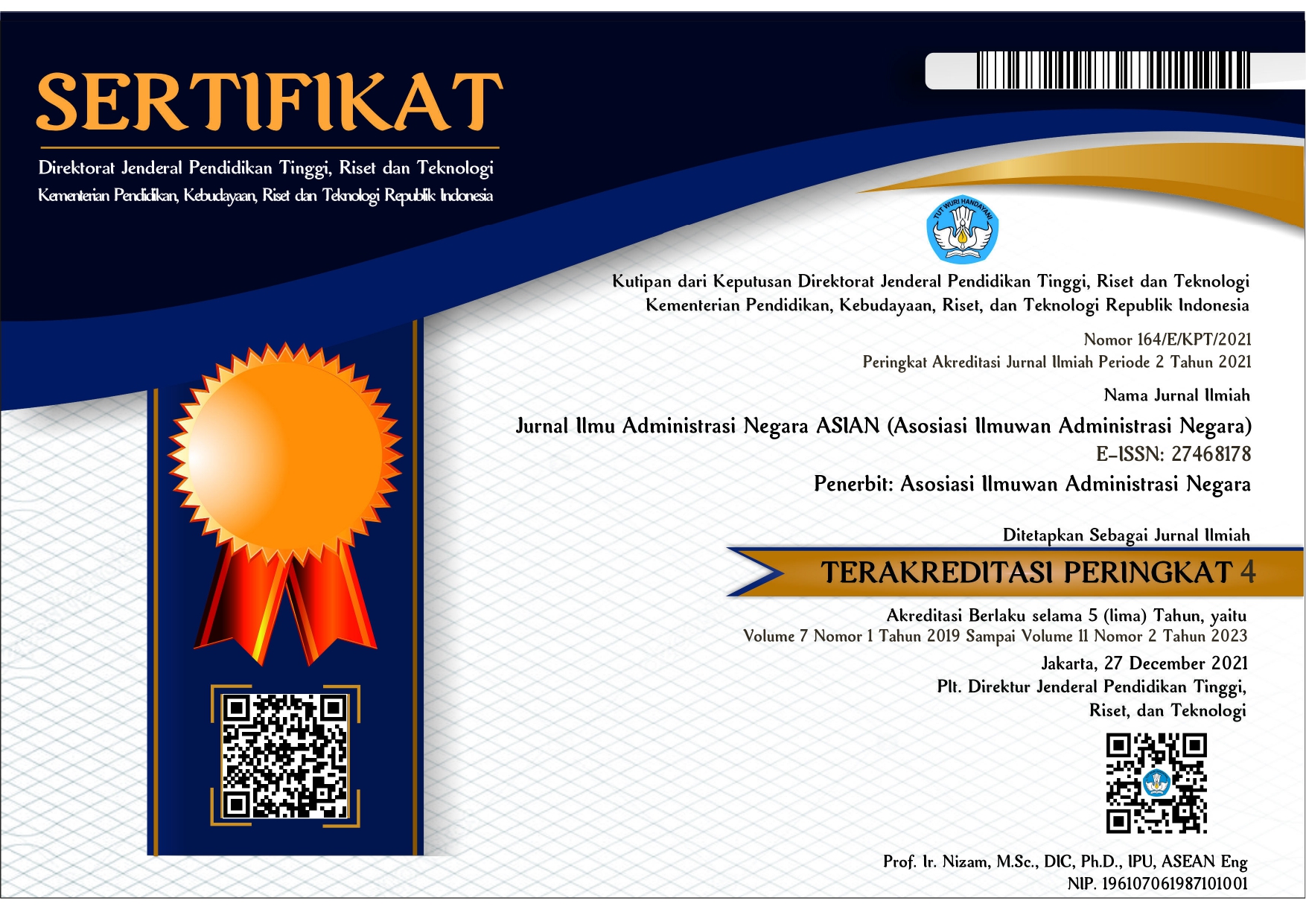Sound Governance dan Gerakan Antikorupsi
 Abstract views: 534
,
Abstract views: 534
,
 PDF downloads: 1902
PDF downloads: 1902
Abstract
The current rampant practice of corruption with various modus operandi has caused the Government to make efforts to prevent and eradicate it by issuing Law Number 31 of 1999 concerning the Eradication of Corruption Crimes through the concept of sound governance. The research method used in this study is a qualitative descriptive method. The type of data used in this study is qualitative data, which is categorized into two types, namely primary data and secondary data. Sources of data obtained through library research techniques which refers to sources available both online and offline. The results of the study concluded that sound governance as a preventive instrument against acts of corruption, the concept of sound governance can be used as an indicator of testing an action by government officials. Efforts to prevent acts of maladministration must be carried out using sound governance principles in an effort to eradicate corruption by government administration. The abuse of authority is an act of maladministration caused by actions that are not based on the principle of good administration in the form of the principle of prohibition of acting arbitrarily, the principle of justice, the principle of legal certainty, the principle of trust, the principle of equality, the principle of proportionality, the principle of prudence caution and considerations. Based on the eight principles of sound governance, the government apparatus will perform the duties and functions of government by always paying attention to these principles to become an effort to eradicate corrupt.
Downloads
References
Addink, H. (2019). Good Governance Concept and Contex.
Anandya, D., Easter, L., Ramadhana, K., Husodo, A. T., Sunaryanto, A., & Watch, I. C. (2021). HASIL PEMANTAUAN TREN PENINDAKAN KASUS KORUPSI SEMESTER I 2021 Penulis : Diky Anandya Lalola Easter Kurnia Ramadhana Reviewer : Adnan Topan Husodo Agus Sunaryanto Indonesia Corruption Watch.
Anticorruption, O. (2021). Office of Anticorruption and Integrity 2021 Annual Report.
Asaduzzaman, M. (2017). Governance Theories and Models. October. https://doi.org/10.1007/978-3-319-31816-5
Farazmand, A. (2004). Sound Governance Policy and Administrative Innovations.
Ilmu, J., Holidin, D., & Handini, R. S. (2014). Sound Governance Analysis in the Innovation of Traditional Market Revitalization and Street Vendors Management. 21(1).
Ilmu, M., Negara, A., Makassar, U., Jurusan, D., Administrasi, I., Unismuh, N., Jurusan, D., Administrasi, I., & Unismuh, N. (2015). PENERAPAN DIMENSI SOUND GOVERNANCE DALAM. 1(April).
Suharsaputra, U. (2012). Metode Penelitian Kuantitatif, Kualitatif, dan Tindakan.
Tjahjanulin. (2011). Sound Governance. https://www.google.co.id/books/edition/Sound_Governance/gJGZDwAAQBAJ?hl=en&gbpv=1&dq=sound governance tjahjanulin&pg=PP1&printsec=frontcover
Yusuf, A. M. (n.d.). Metode Penelitian Kuantitatif, Kualitatif, dan Penelitian Gabungan.
Copyright (c) 2022 Jurnal Ilmu Administrasi Negara ASIAN (Asosiasi Ilmuwan Administrasi Negara)

This work is licensed under a Creative Commons Attribution-ShareAlike 4.0 International License.
Authors who publish with this journal agree to the following terms:
1. Copyright on any article is retained by the author(s).
2. The author grants the journal, right of first publication with the work simultaneously licensed under a Creative Commons Attribution License that allows others to share the work with an acknowledgment of the work’s authorship and initial publication in this journal.
3. Authors are able to enter into separate, additional contractual arrangements for the non-exclusive distribution of the journal’s published version of the work (e.g., post it to an institutional repository or publish it in a book), with an acknowledgment of its initial publication in this journal.
4. Authors are permitted and encouraged to post their work online (e.g., in institutional repositories or on their website) prior to and during the submission process, as it can lead to productive exchanges, as well as earlier and greater citation of published work.
5. The article and any associated published material is distributed under the Creative Commons Attribution-ShareAlike 4.0 International License








